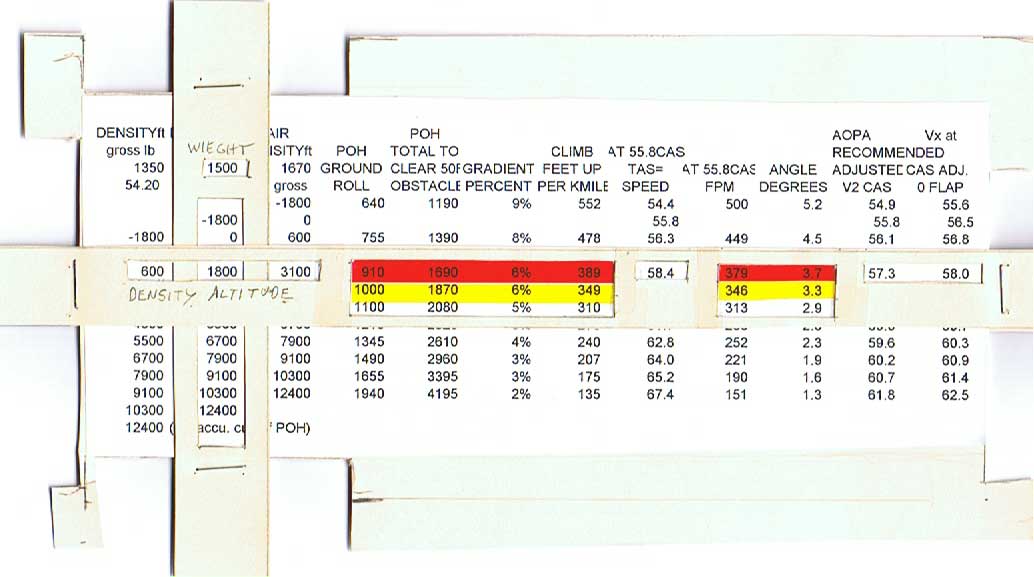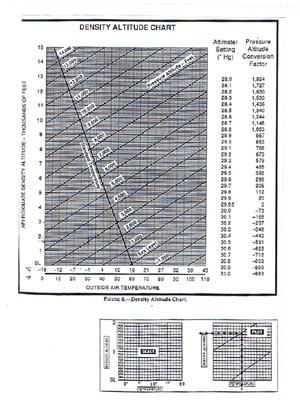 These numbers
are generated from the concepts below and spreadsheets
These numbers
are generated from the concepts below and spreadsheets

[Para 31] Fig. 9. Flight variable dependency diagram. This diagram explains how the aircraft's critcal performance numbers are calculated and determined by the density altitude and weight of the aircraft. This helps to comprehend the operation of and purpose of the Density and Weight to Performance calculator in Fig. 10.
[Para 32] Fig. 10. Density and Weight to Performance Calculator. This performance calculator is based on two sliders on the left that determine a combination of aircraft weights and density altitudes which match interpolated and matched data that has the effect of eliminating interim calculations and giving a good approximation of all aircraft performance parameters is easily as has ever been conceived in a simple analog paper calculator. The runway distances are uniquely handled by having a window opening covering 3 of the interpolated lines with a red gelatin over the absolute minimum perfect no mistake take off and landing runway distances. These distances would typically be those in the certified manual performed by the test pilot under ideal conditions. These handbook distances are considered by many authoritative commentators as not realistically safe for the average operator. The next line down is one lines worth of length more safe and covered with yellow. The line below that is open without a colored gel and signifies a safer take off and landing distances.
[Para 33] More Dependant variables can be included on the calculator than those shown, Given the limits of space the choice would be biased for those that assist in real distance calculations, or some may be grouped in a second calculator. for example: Vx Climb gradient percent, Vx Climb feet upwards per mile, Vx average speed Feet per minute, VX averages speed converted to True airspeed, Vy at varying conditions similar in 1thru 4 above and miles per thousands of altitude, Gallons per minute at Vy and Vx, Escape Speed in smooth air with no maneuvering, Max Range Speed Indicated, Max Range Speed TAS, Max Range GPM, Compromise Speed/Range similar 8 thru 10 above, Max Duration Indicated similar 8 thru 10 above, Minimum Turning Radius speed, Minimum Turning Radius radius, Minimum Turning Radius Bank Angle, Descent speed IAS, Descent, miles per thousands of altitude and similar to Vx 1 thru 5, Distance at Take off abort decision and minimum speed, Take off speed, Rotation speed.
